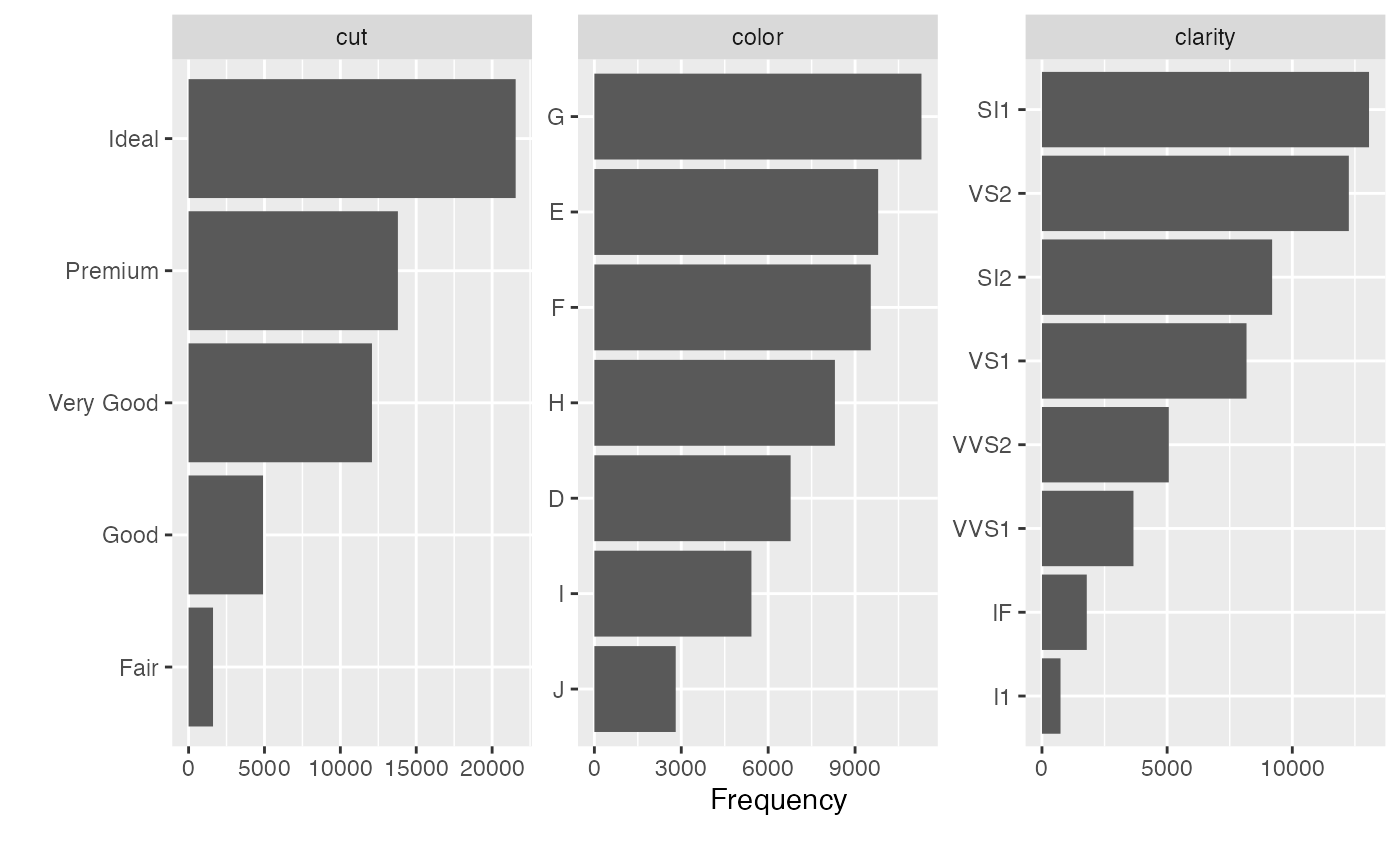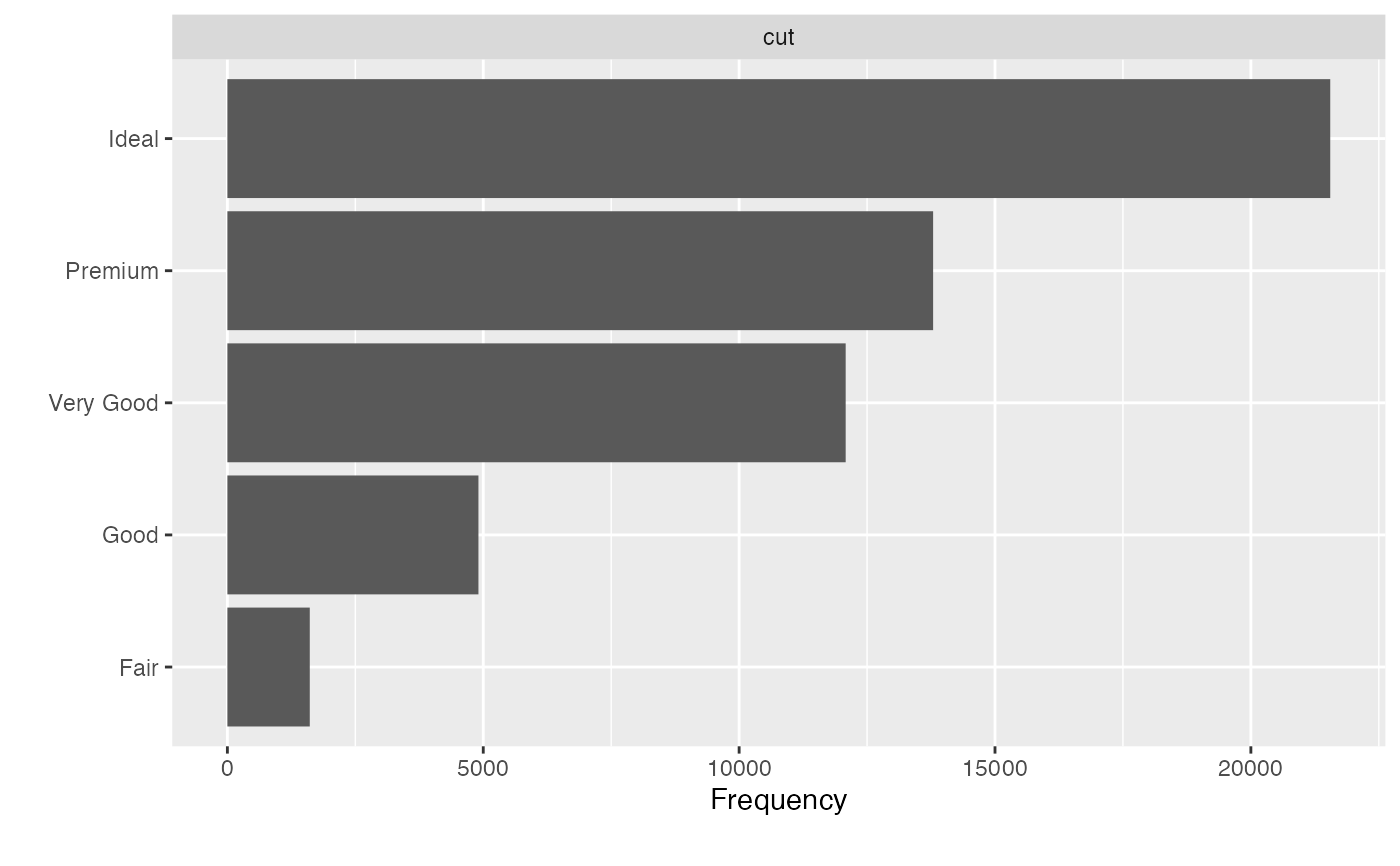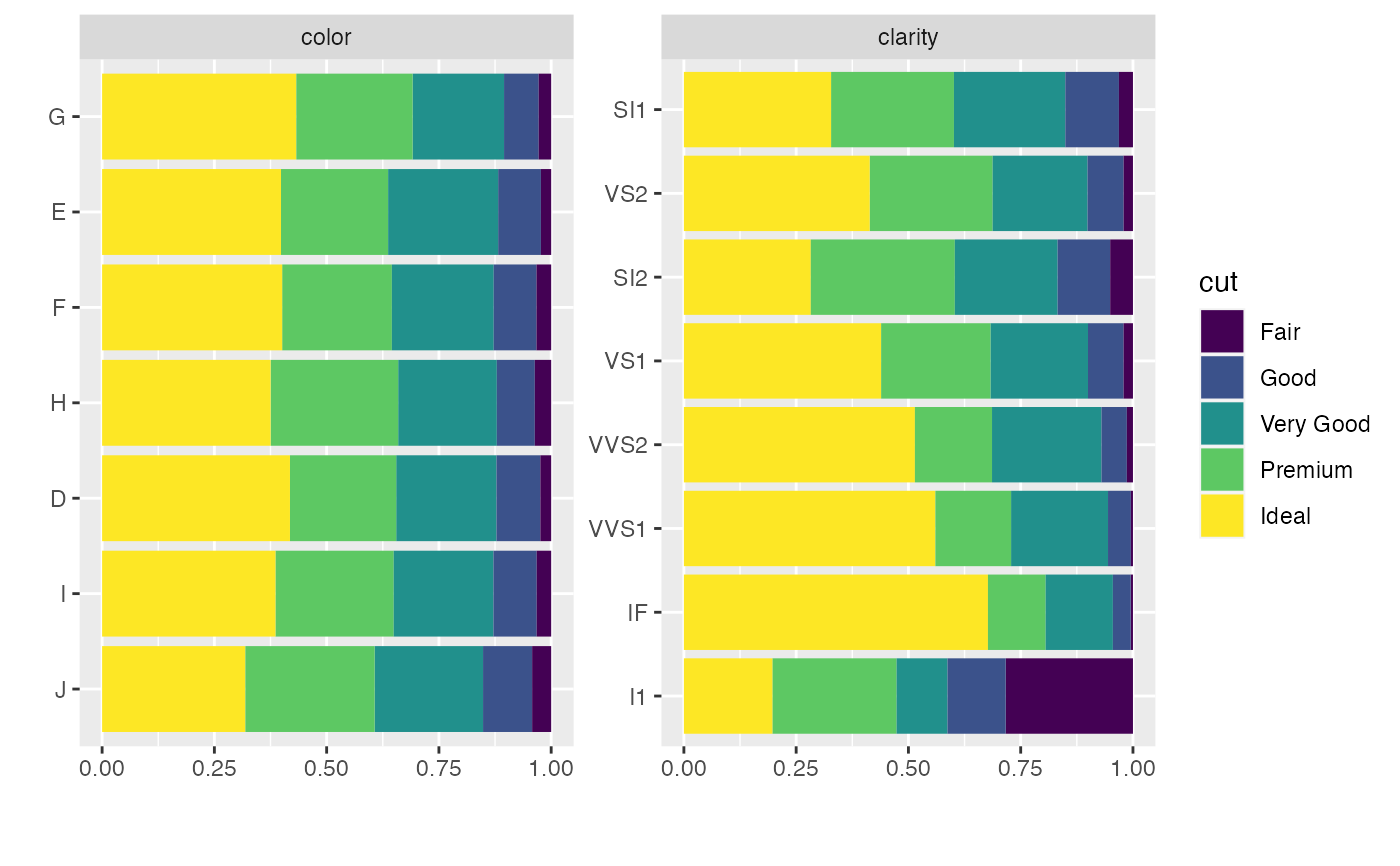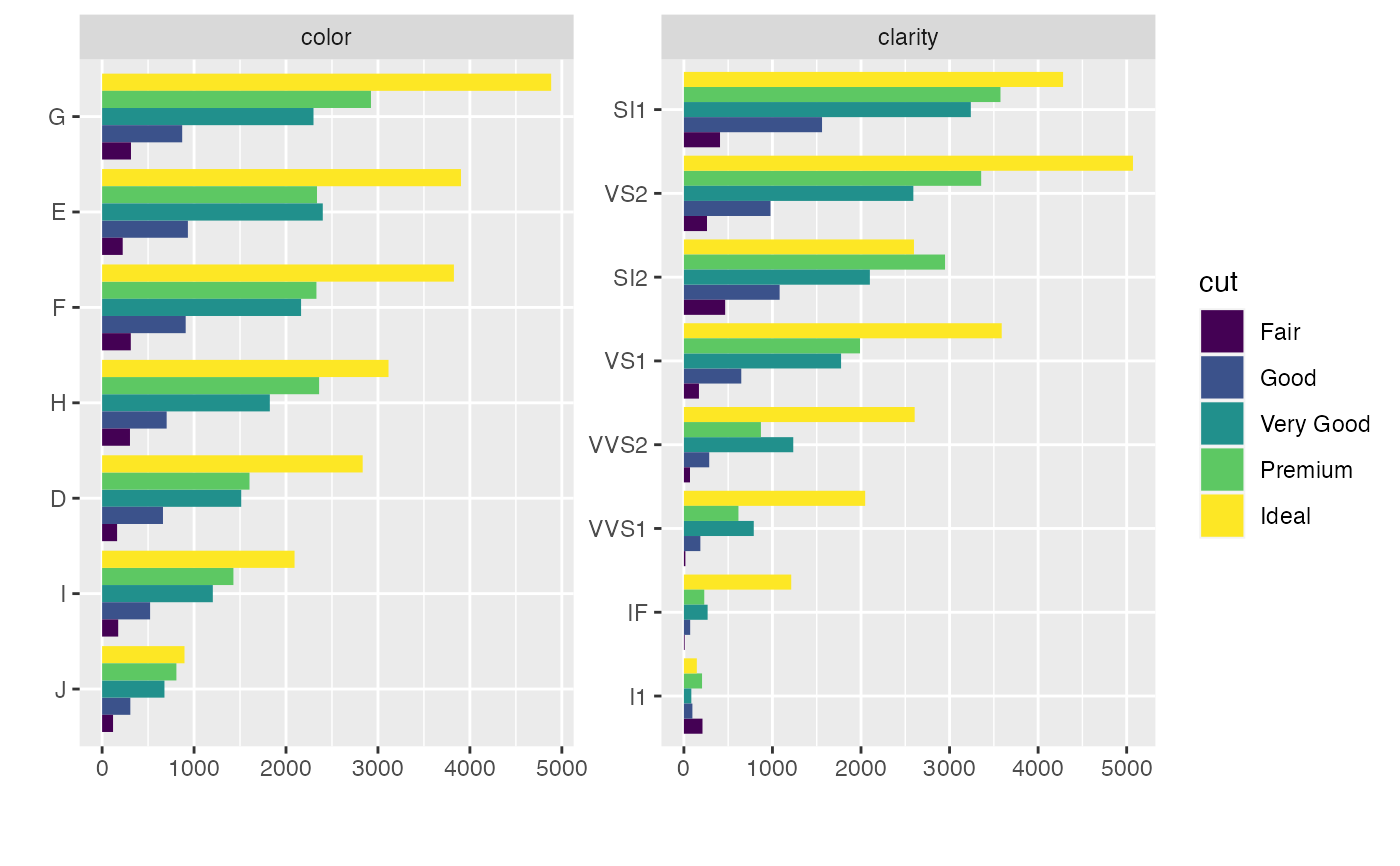Plot bar chart for each discrete feature, based on either frequency or another continuous feature.
Usage
plot_bar(
data,
with = NULL,
by = NULL,
by_position = "fill",
maxcat = 50,
order_bar = TRUE,
binary_as_factor = TRUE,
title = NULL,
ggtheme = theme_gray(),
theme_config = list(),
nrow = 3L,
ncol = 3L,
parallel = FALSE
)Arguments
- data
input data
- with
name of continuous feature to be summed. Default is
NULL, i.e., frequency.- by
discrete feature name to be broken down by.
- by_position
position argument in geom_bar if
byis supplied. Default is"fill".- maxcat
maximum categories allowed for each feature. Default is 50.
- order_bar
logical, indicating if bars should be ordered. Default is
TRUE.- binary_as_factor
treat binary as categorical? Default is
TRUE.- title
plot title
- ggtheme
complete ggplot2 themes. Default is theme_gray.
- theme_config
a list of configurations to be passed to theme
- nrow
number of rows per page. Default is 3.
- ncol
number of columns per page. Default is 3.
- parallel
enable parallel? Default is
FALSE.
Details
If a discrete feature contains more categories than maxcat specifies, it will not be passed to the plotting function.
Examples
# Plot bar charts for diamonds dataset
library(ggplot2)
plot_bar(diamonds)
 plot_bar(diamonds, maxcat = 5)
#> 2 columns ignored with more than 5 categories.
#> color: 7 categories
#> clarity: 8 categories
plot_bar(diamonds, maxcat = 5)
#> 2 columns ignored with more than 5 categories.
#> color: 7 categories
#> clarity: 8 categories
 # Plot bar charts with `price`
plot_bar(diamonds, with = "price")
# Plot bar charts with `price`
plot_bar(diamonds, with = "price")
 # Plot bar charts by `cut`
plot_bar(diamonds, by = "cut")
# Plot bar charts by `cut`
plot_bar(diamonds, by = "cut")
 plot_bar(diamonds, by = "cut", by_position = "dodge")
plot_bar(diamonds, by = "cut", by_position = "dodge")

